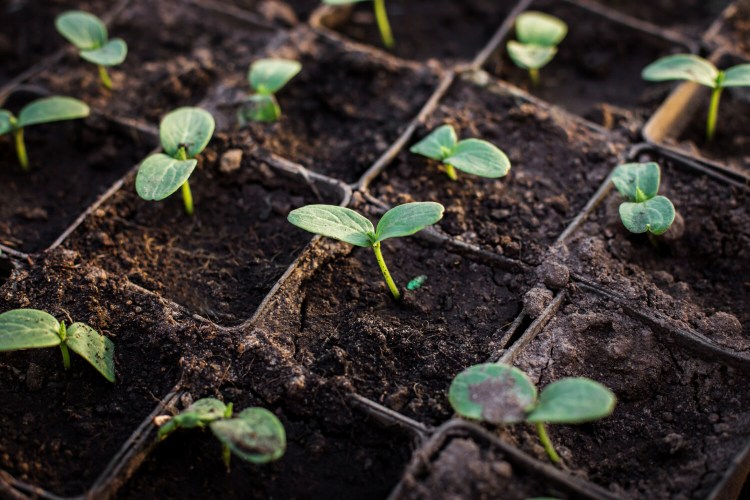When COVID-19 hit last March and so many Americans decided they had to grow something, anything, seed companies ran short of seeds.
The shortage was understandable. Early on, photos of empty shelves in grocery stores appeared on television and newspapers, and many people feared they might not be able to buy the vegetables (and maybe cut flowers) they needed or wanted. In addition, people knew they would be stuck home, and gardening could fill their time.
The shortage has continued this year, so many people apparently still plan to garden as COVID protocols slows production and packaging of seeds, both locally and nationally.
Earlier this month, Fedco, which is based in Clinton, said it was “accepting new orders for vegetable, flower, and herb seeds only from customers on our waiting list.” Johnny’s Selected Seeds, in nearby Winslow, instituted a pause on taking seed orders from home gardeners – but not commercial farmers – that ended on Feb. 18. New Gloucester-based Pinetree Garden Seeds was still taking orders at the time I wrote this column, but warned of longer delivery times; some items in their catalog were, at least temporarily, out of stock. At Allen, Sterling & Lothrop, which sells seeds only in its Falmouth store, company president Shirley Brannigan reported a good supply so far, but noted that one major delivery has not yet arrived.

Remember the run on seeds last year as new pandemic gardeners scrambled for supplies? This year is shaping up similarly. AP Photo/John Raby
Out-of-state seed companies had similar messages on their websites about shipping delays and out-of-stock items.
If you are unable to find the seeds you want to buy, the next step is to check your own supply. Few gardeners use up all the seeds they buy each year, so typically they have some left over. Even the biggest anti-clutter neatness freaks don’t throw away their leftover seeds before the next growing season begins — at least I hope not.
The good news? Most seeds will be viable for a few years after the year they were packed and purchased – and that year almost always appears on the seed packet. But how long will they last? “That depends,” Mary Wicklund, a home horticulture coordinator for the University of Maine Cooperative Extension’s Falmouth office, said in a telephone interview.
The first thing it depends on is how the seed was stored. If it spent time in the rear window of a car throughout the summer, getting hot and humid, the seed probably won’t be viable for even a year. What seeds like is cool and relatively dry conditions. Storing them in the refrigerator, or even the freezer, provides that, she said, or in a basement that is not too damp. I have left seed in our unheated garage in the past, and it has been fine the next year when I planted it. This year, we’re storing leftover seed in our new, unheated shed.
How long the seed remains viable also depends on the type. Pelletized seed, in which tiny seeds like carrots and tomatoes are covered in a clay-like substance to make them easier to handle, should be used the year it is purchased, as the pelletizing process dries out the seed, Wicklund explained.
Wicklund sent me a link to a Michigan State University site that shows how to test seeds for viability. Dampen half a paper towel, and place 100 seeds (ideally, but if you’re short of seeds use as few as 10) on the damp section, fold the dry section over the seeded section, roll the whole thing into a loose tube, place the tube into a sealed plastic bag and — for most Mainers, this is the tough part — put the bag in a section of the house that is 70 to 85 degrees. You then check every few days to see how many seeds have germinated and remove those that have. Any viable seeds will sprout within about three weeks, and at that point you’ll have the answer about the viability of the remainder of your leftover seeds.
Wicklund said she seldom does germination tests, and I never have. First, just because a seed germinates doesn’t mean it will be vigorous. Next, it’s simpler just to plant the seeds a little more thickly than usual, on the assumption that old seed probably has a higher percentage of non-viable seeds.
In their catalogs, Johnny’s and Fedco also offer seed viability estimates. They range from one year for onion seed; two years for many, including lettuce, carrots, peas and peppers; and as much as five to 10 years for melons, cucumbers and tomatoes.
When I suggested to Wicklund that it might make sense for people to buy more seed than they need, especially if they can get a volume discount, and just plant any extra the following year. She replied it’d be more sensible for neighbors to share a seed order as a way to get a volume discount. Otherwise people may store saved seed improperly, she worried, forget where they stored it or forget about it entirely.
That does sound like me. Still, if you can’t buy the seed you need, see if your can locate your leftovers.
Tom Atwell is a freelance writer gardening in Cape Elizabeth. He can be contacted at: tomatwell@me.com
Send questions/comments to the editors.



Success. Please wait for the page to reload. If the page does not reload within 5 seconds, please refresh the page.
Enter your email and password to access comments.
Hi, to comment on stories you must . This profile is in addition to your subscription and website login.
Already have a commenting profile? .
Invalid username/password.
Please check your email to confirm and complete your registration.
Only subscribers are eligible to post comments. Please subscribe or login first for digital access. Here’s why.
Use the form below to reset your password. When you've submitted your account email, we will send an email with a reset code.